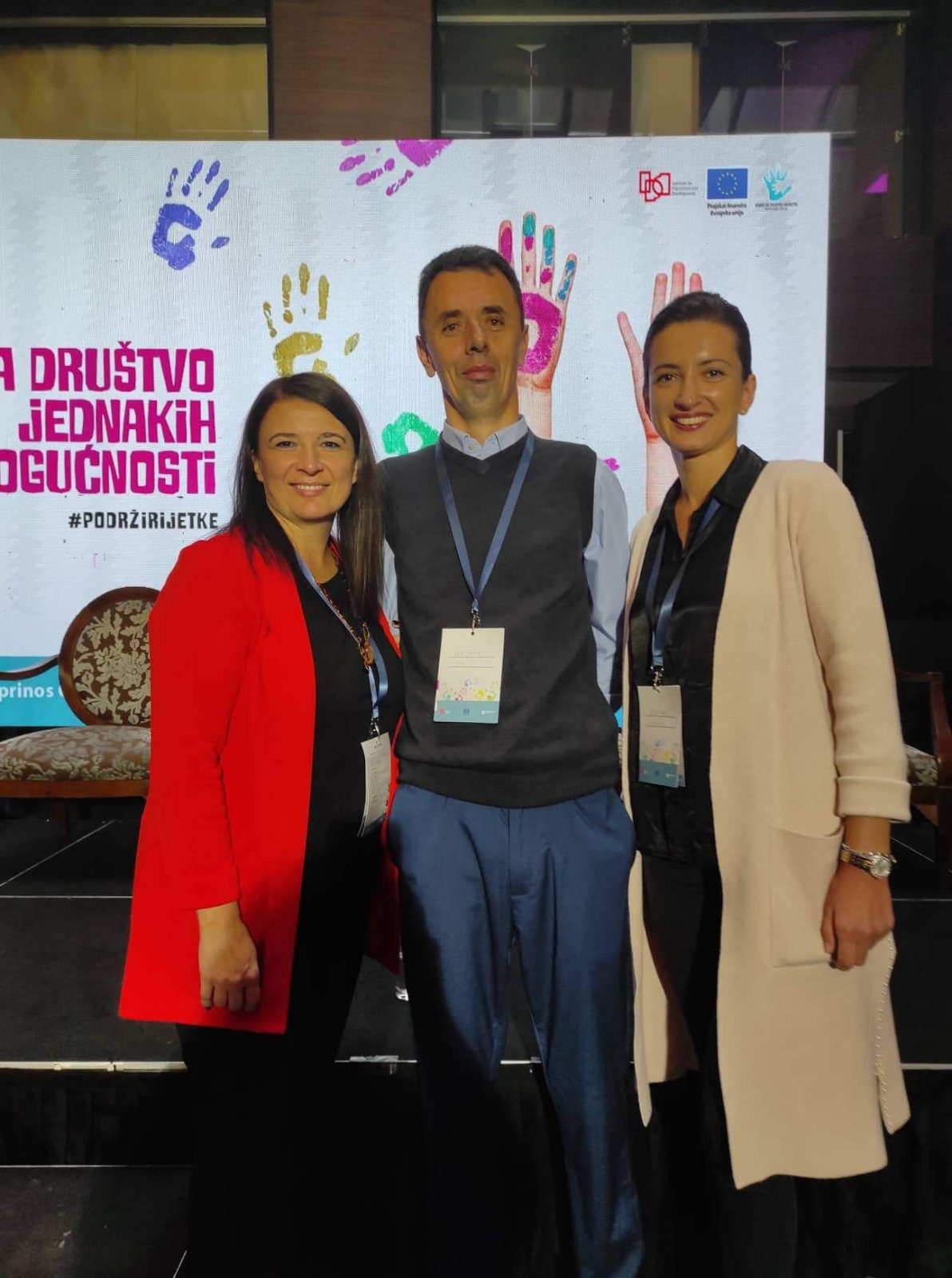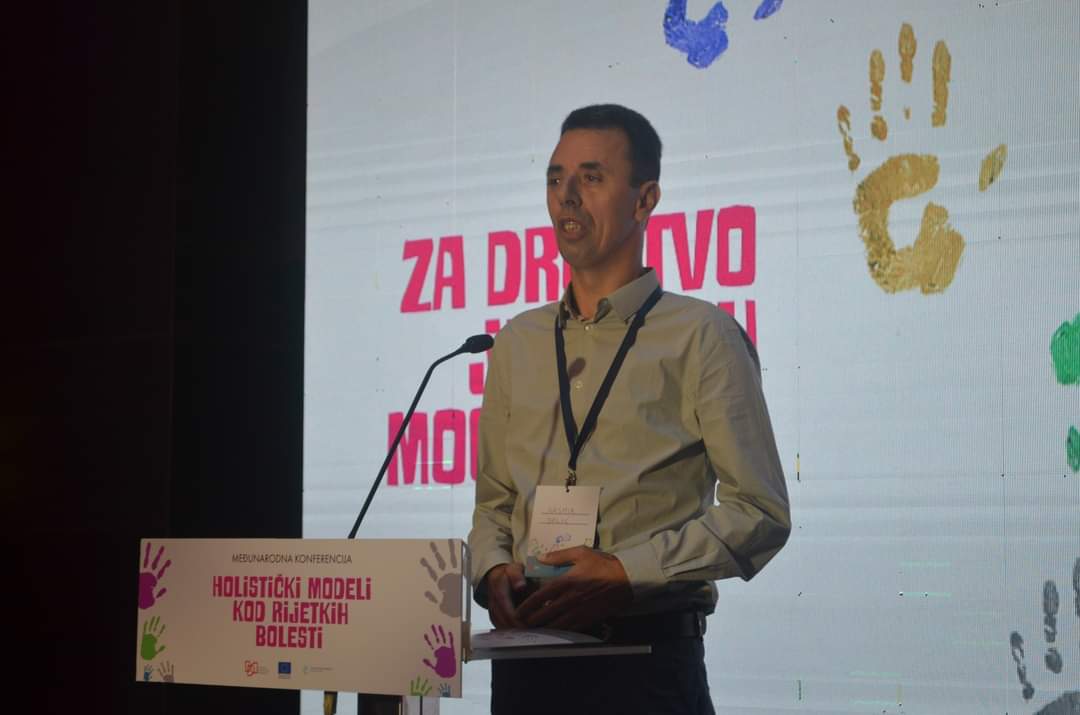By Jelena Kalinić, 2022 HJN Ambassador
When someone mentions rare diseases, the first image in their head might be a severe disorder that manifests itself as a physical disability. However, not all rare diseases are of this nature. Patients with rare diseases are not in the same position in all countries of the world. Discrimination, lack of protection, and challenges accessing medicines and aids are more severe in some countries. A comparison of the situation in a country with a high GDP, such as the United States, and a small country where primary health care is not at an adequate level, such as Bosnia and Herzegovina, can provide a glimpse into the situation on a global level.
How rare are rare diseases?
There are 7,000 rare diseases worldwide (1). More than 300 million people worldwide are currently living with a rare disease (2, 3) . Definitions of rare diseases differ among countries or regions. For example, in Europe, a disease is considered rare when it affects 1 person per 2,000 (4), while in the United States, a disease is considered rare if it is affects fewer than 200,000 Americans (5). It should be said that 70% of rare diseases exclusively start during childhood (6).
It is worth mentioning that rare diseases are not only congenital disorders, syndromes and diseases of the nervous and muscular system or metabolic diseases. 72% of rare diseases are genetic (7), but there are also very rare forms of infectious diseases, auto-immune diseases and rare cancers (8). Other rare diseases may also be the result of allergies and environmental causes, Poliomyelitis is an example of infectious rare disease. Some examples of most common rare diseases: narcolepsy, cystic fibrosis and haemophilia.
The situation in Bosnia and Herzegovina
The Alliance for Rare Diseases of the Republic of Srpska (one of the two administrative entities in Bosnia and Herzegovina), a non-governmental organisation dealing with the protection of rights and assistance to patients with rare diseases, say that the most common rare diseases in this part of Bosnia are haemophilia, cystic fibrosis, epidermolysis bullosa, phenylketonuria and Rett syndrome.

“All others are those where there are less than 10 patients, and of the currently 167 registered diagnoses in our Association, 122 patients are the only ones suffering from their disease in the RS (122 diagnoses),” says Biljana Kotur from the Alliance for Rare Diseases of the Republic of Srpska.
In another entity of Bosnia and Herzegovina, the Federation of Bosnia and Herzegovina, an organisation was recently founded to protect the rights of patients with rare diseases. In the Alliance for rare diseases – ARD of the Federation of BiH. According to their insights, the most common medical diagnoses of rare diseases are cystic fibrosis, phenylketonuria, spinal muscular atrophy, and haemophilia.
Patients with rare diseases are often faced with challenges of obtaining medicines as well as accessing therapeutic treatments and to what extent medical insurance covers the cost.
Since 2019, patients with rare diseases in Bosnia-Republika Srpska are exempt from co-payments, and their treatment costs are covered. “Medicines that they buy themselves, and which are listed on the prescription at the suggestion of a specialist, are reimbursed by the Health Insurance fund. In current practice, medicines purchased abroad are also refunded,” says Kotur from the Alliance for Rare Diseases of the Republika Srpska.
“Unregistered medicines are procured through interventional import by the Health Insurance Fund at the suggestion of a health institution, and here is also a special Program for the procurement of innovative medicines, with a very high price, for which the Health insurance fund allocated approximately 5 million KM (Bosnian convertible marks) this year, and medicines were procured for 7 different rare diagnoses,” Kotur adds.
The right to aids is realised in accordance with the Ordinance for Orthopaedic Aids of the Health Insurance Fund, but, for example, for the purchase of diapers, given that the amount covered by the Health Insurance Fund is often not enough, a large number of families pay extra and this is not refunded.
“Also, some expensive aids, specific for certain diseases, are not covered by the Health Insurance Fund, and their purchase is practically the responsibility of the family,” says Kotur.
How to support people with rare diseases
One course of action is certainly strengthening public health systems and lobbying insurance companies (private, state, depending on the state) to cover the costs of therapy so that people can improve their quality of life or be cured. The second way is to strengthen the awareness of these diseases among the unaffected.
There are various ways to help those affected by rare diseases and their families. One of the supra-national non-governmental organisations whose mission is to provide people with rare diseases with a better quality of life is EURORDIS. Their mission is to work across borders and diseases to improve the lives of all persons living with a rare disease.

“One way to help patients with rare diseases is raising awareness among the public,” says James Levine, MD PhD Director of the Rare Disease Institute at Fondation Ipsen.
“Some examples of actions include raising public awareness during Rare Disease Day: e.g., Rare Disease Day Campaign Communication grants with EURORDIS, raising awareness about rare diseases in schools: e.g., Rare Disease Day Schools toolkits with EURORDIS, and raising awareness among the public by developing and distributing books about rare diseases: e.g., Fondation Ipsen’s BookLab,” says Levine.
Other ways to improve the situation for these patients and build a bridge between them and people who are not affected by these diseases is providing and disseminating scientific information for the rare disease and trainings or the journalists to communicate about rare diseases. The latter is very important because there are cases when the media use discriminatory and even humiliating language regarding these patients. Also, helping patients at policy level around patient health data, supporting companies and entrepreneurs to help patient are ways to make situation better for patients with RD.
“The European Reference Network on Rare Multisystemic Vascular Diseases (VASCERN) developed an app to help patients find expert centres and patient organisations, contributing to patients’ self-confidence, safety, and quality of care,” says Levine.
Challenges for people with rare diseases
However, despite the fact that the US has a higher GDP, patients with rare diseases, especially those who come from poor backgrounds, face various adversities. Patients living with a rare disease in the US face challenges linked to the healthcare insurance system. Knowledge gaps about rare diseases and related care often place patients or their families in the role of disease experts and care coordinators, who must identify services across healthcare and social service agencies.
“To avoid large out-of-pocket bills, patients or their families must interface with health insurance representatives to advocate for coverage of services. Like healthcare delivery systems in the U.S, the insurance system is highly complex, fragmented, and eligibility for plans varies based on sociodemographic factors, geography, and employment status,” adds Levine.
Financial burden
Rare diseases therefore generate huge financial strain for patients, due numerous visits to specialists in multiple locations, the rarity of experts or specialty centres managing the disease, which are thus unlikely to be in a families’ approved network of healthcare providers, and costly treatments. According to NORD’s 2019 survey, 76% of all respondents had experienced financial challenges due to their own or their family member’s rare diagnosis (9).
The problem for patients is also that clinical centres are located in larger cities and for patients with rare diseases, receiving specific therapies if they are in a small town is difficult. Bosnia and Herzegovina, unlike neighbouring countries, is the most poorly connected by roads, and the journey takes much longer than if there was a highway. All this complicates the health care of patients with rare diseases.
Lack of psychosocial support for patients and their families
Often, patients with rare diseases and/or their family members suffer from depression and anxiety. However, they are often denied psychological help or do not even know they need it.
“During a research that we conducted in 2018 with the aim of providing psychological help in smaller local communities within the Health Centers, it turned out that many smaller places do not have adequate staff at all and are not able to offer help,” explains Kotur.
There are many problems faced by patients with rare diseases in Bosnia. Some of the biggest ones, according to Alliance for Rare Diseases RS, are insufficient staff, lack of rehabilitation centres for children, absence of day care centres, as well as the disparities between rural and urban areas in terms of healthcare capacity.
An ongoing struggle
Hasmir Delić, President of the Alliance for Rare Diseases in the Federation of Bosnia and Herzegovina emphasises that one of the basic problems that people with RD face is the unavailability of adequate medicines. They share most of the problems with patients from Republika Srpska.

“First of all, effective drugs have not yet been found for a large part of rare diseases, while those that do exist are mostly difficult to afford. Also, drugs for rare diseases are often not even registered for circulation in a certain country, and are procured through the so-called ‘interventional’. The costs of treatment are generally high,” says Mr Delić.
Also, patients and their families face complicated bureaucratic procedures for the realisation of various rights in the field of social protection, which additionally exhausts the family.
“The life of a person suffering from rare diseases and their families is spent in a constant struggle for bare life, struggle to meet the norms of administrative bureaucracy, collect documentation and prove a medical diagnosis in order to at least partially ease the difficult access to necessary medicines,” explains Delić.
“In the Federation of Bosnia and Herzegovina, we can say that there is currently no standardised approach, nor adequate epidemiological data on rare diseases. Likewise, the general and professional public are not educated in the best possible way about rare diseases, which has consequences for the organisation of health care for this category of the population, but also for problems related to the realisation of social rights. Inadequate health care, which does not cover all the health needs of this population, is an alarming problem, which must be solved systematically,” notes Mr. Delić.
In Bosnia and Herzegovina, as well as in neighbouring countries, patients with rare diseases are neglected and it is often up to the poor to fight for their rights. Going through the jungle of bureaucracy, lack of medical staff and specialisation, difficulties in establishing the right diagnosis, and finally, the lack of funds for therapy when the diagnosis was established, only add to the issue. Another part of the problem is the lack of psychological and psychiatric support, and especially for people with rare diseases who live in rural areas, smaller towns and villages.
There is also the problem of lack of awareness about these diseases in the general population. But, as we can see, these are problems shared by highly developed countries.
On the global front, there is still much to be done. To begin with, journalists should adopt a non-discriminatory vocabulary when reporting on rare diseases and – report more on them and the problems of people with rare diseases in order to raise awareness. If we look at the complexity of the problem, it is still not enough and a lot of work is ahead for all of us together.
References
- About – Genetic and Rare Diseases Information Center (nih.gov)
- Rare Diseases: Over 300 million Patients Affected Worldwide | Newsroom | Inserm
- PrevalencePaper_JointStatement_170919_Final.pdf (eurordis.org) i.e. Estimating cumulative point prevalence of rare diseases: analysis of the Orphanet database | European Journal of Human Genetics (nature.com)
- Orphanet: About rare diseases
- National Organization for Rare Disorders (NORD) | NIDCD (nih.gov)
- https://www.rarediseasesinternational.org/living-with-a-rare-disease/#:~:text=70%25%20of%20rare%20genetic%20diseases,allergic%20reactions%20and%20rare%20cancers.&text=There%20is%20limited%20research%2C%20medical%20knowledge%20and%20expertise%20on%20rare%20diseases
- What is a rare disease? – eurordis.org
- Orphanet: About rare diseases
- NRD-2088-Barriers-30-Yr-Survey-Report_FNL-2.pdf (rarediseases.org)